Abstract
This study describes the prevalence on glucose intolerance by race and ethnicity in the United States Virgin Islands. A population-based sample of 1026 individuals 20 years of age or older was recruited on the island of St. Croix, U.S. Virgin Islands, where 80% of the population classify their race as African American and 20% indicate their ethnicity as Hispanic. American Diabetes Association (ADA) criteria was used to classify glucose tolerance for the entire sample. Persons 40 years of age or older (405) were also administered a 2-h oral glucose tolerance test. Among the major race/ethnic groups, the prevalence of diabetes in patients 20 years of age or older (age-adjusted to the 1995 world population) was 14.1% for non-Hispanic blacks (n = 712), 12.1% for Hispanic blacks (n = 145), 13.5% for Hispanic whites (n = 70) and 1.2% for non-Hispanic whites (n = 37). In each group, the prevalence of diabetes increased with age and appeared higher for men. Among individuals 40 years of age or older a slightly higher prevalence of newly diagnosed diabetes was found when using World Health Organization (WHO) criteria compared to ADA criteria (WHO 10.3%, ADA 7.7% for black non-Hispanic persons and WHO 10.4%, ADA 6.0% for all other groups combined). The prevalence of diabetes for African Americans residing in the U.S. Virgin Islands is similar to rates for the African-American population on the United States mainland and is double that of estimates for blacks on neighboring islands.
Full text
PDF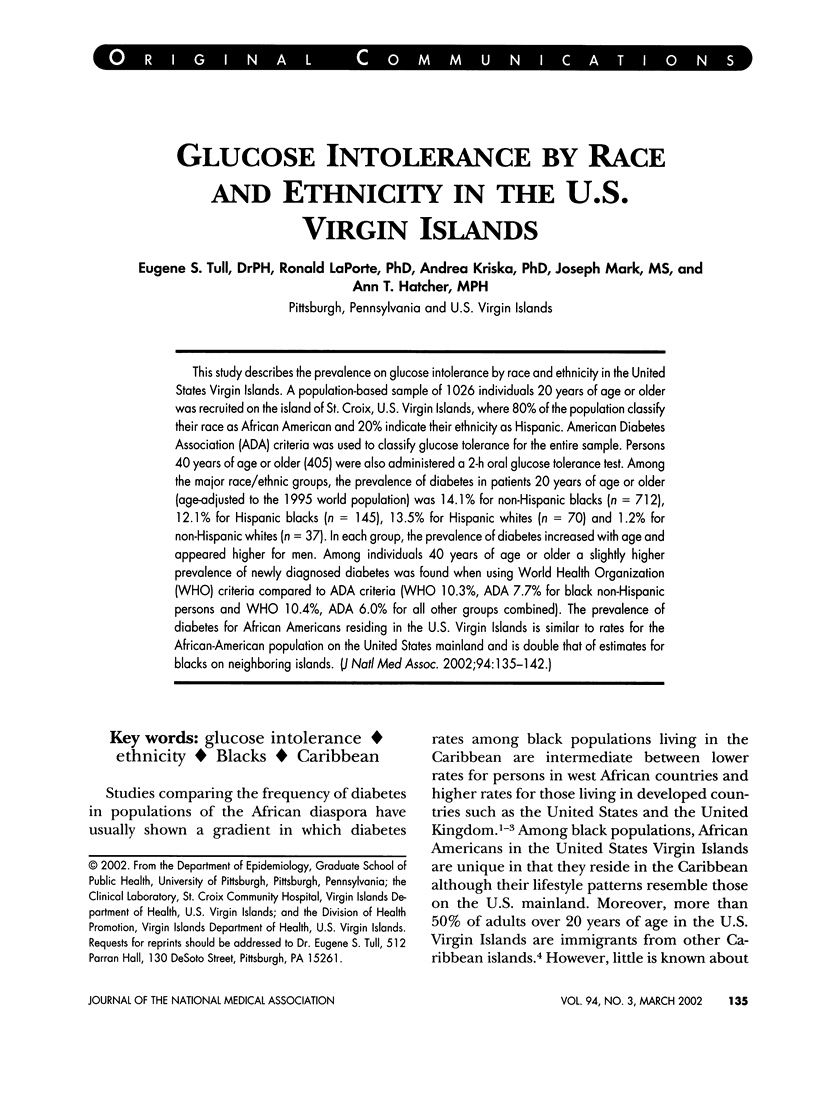
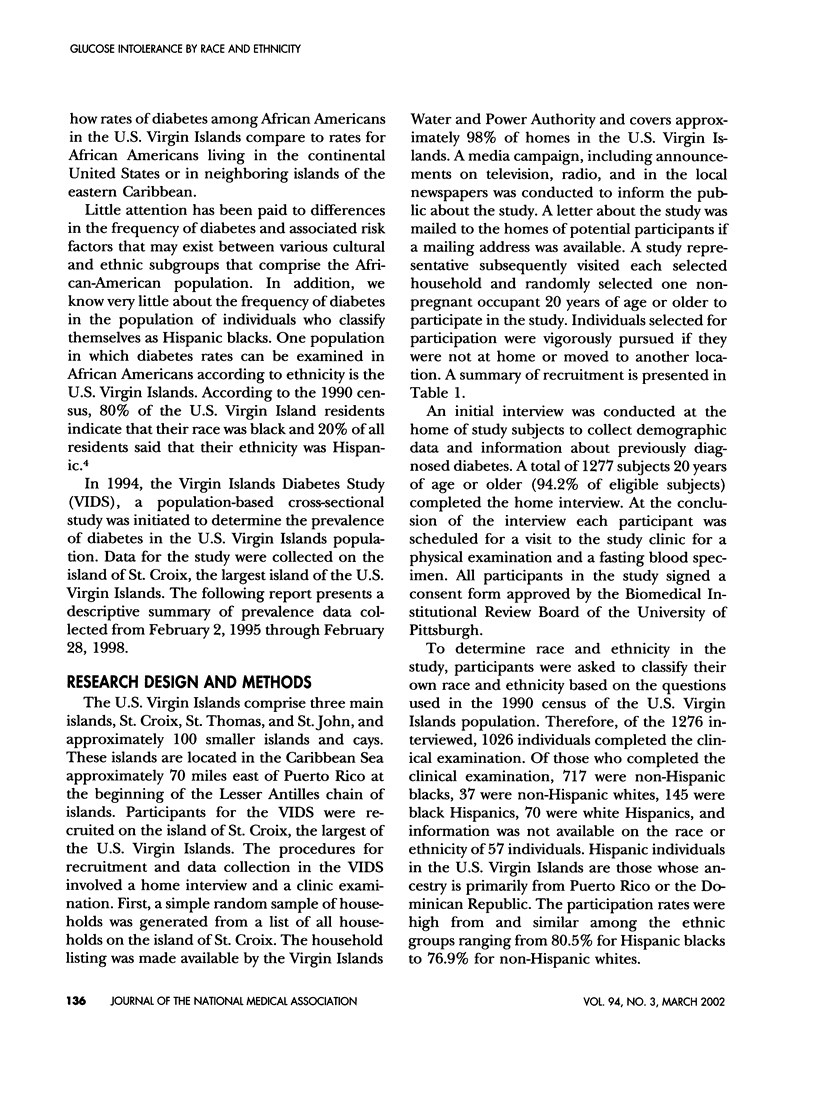
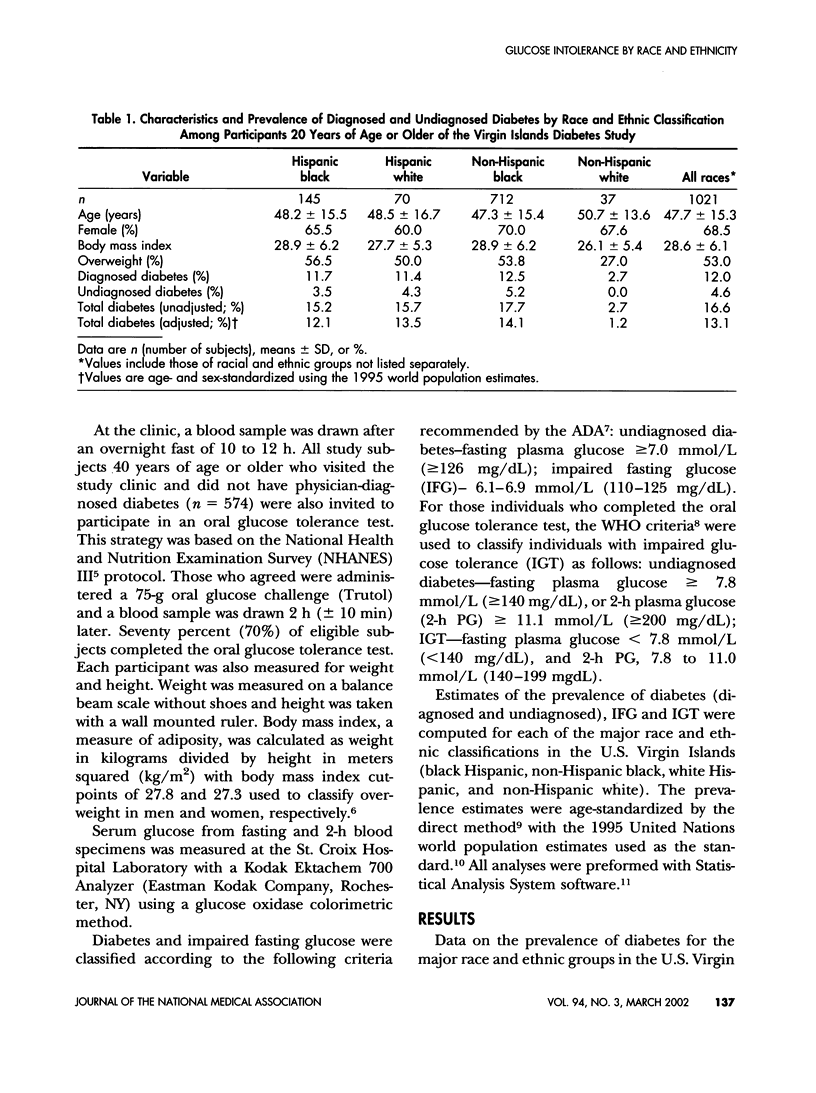
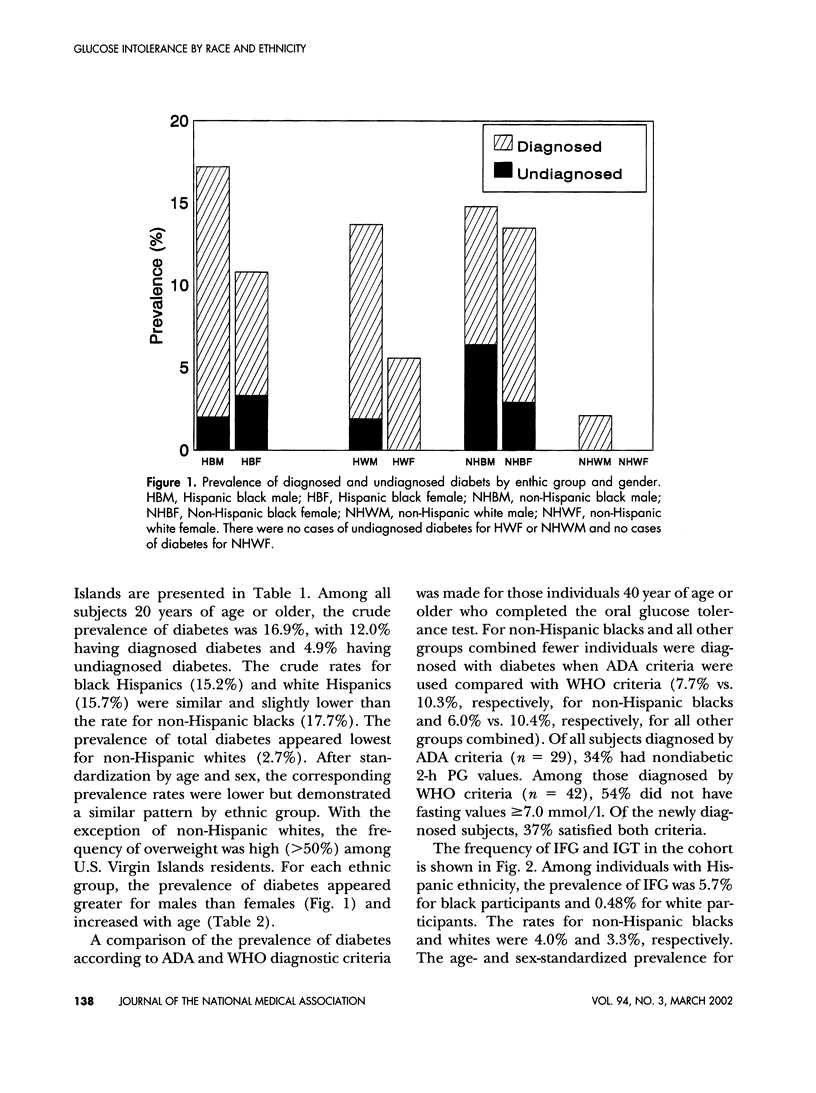

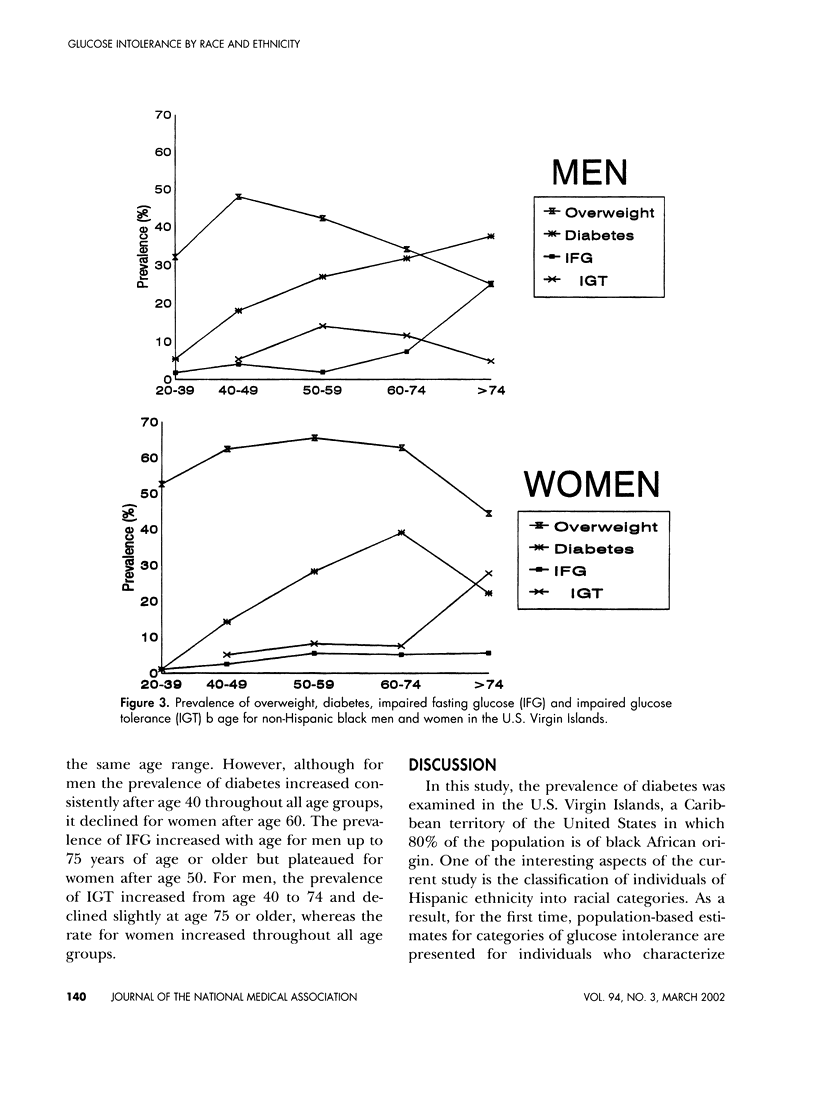
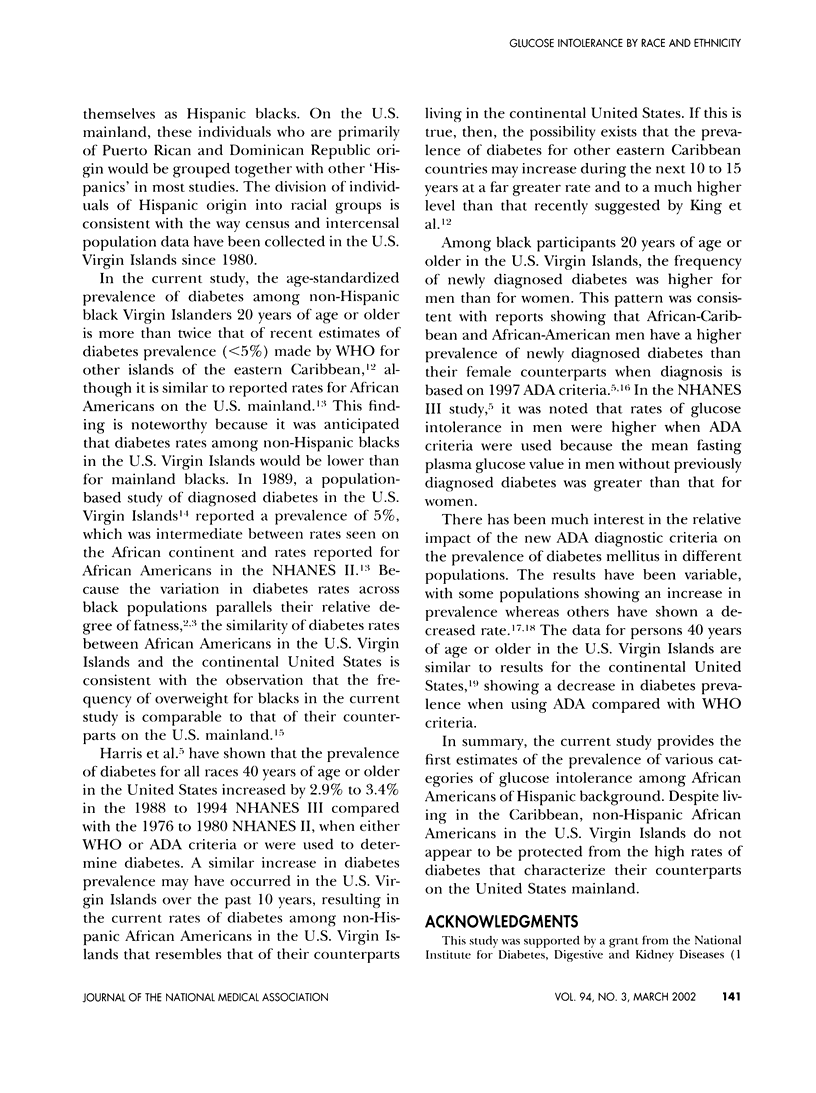
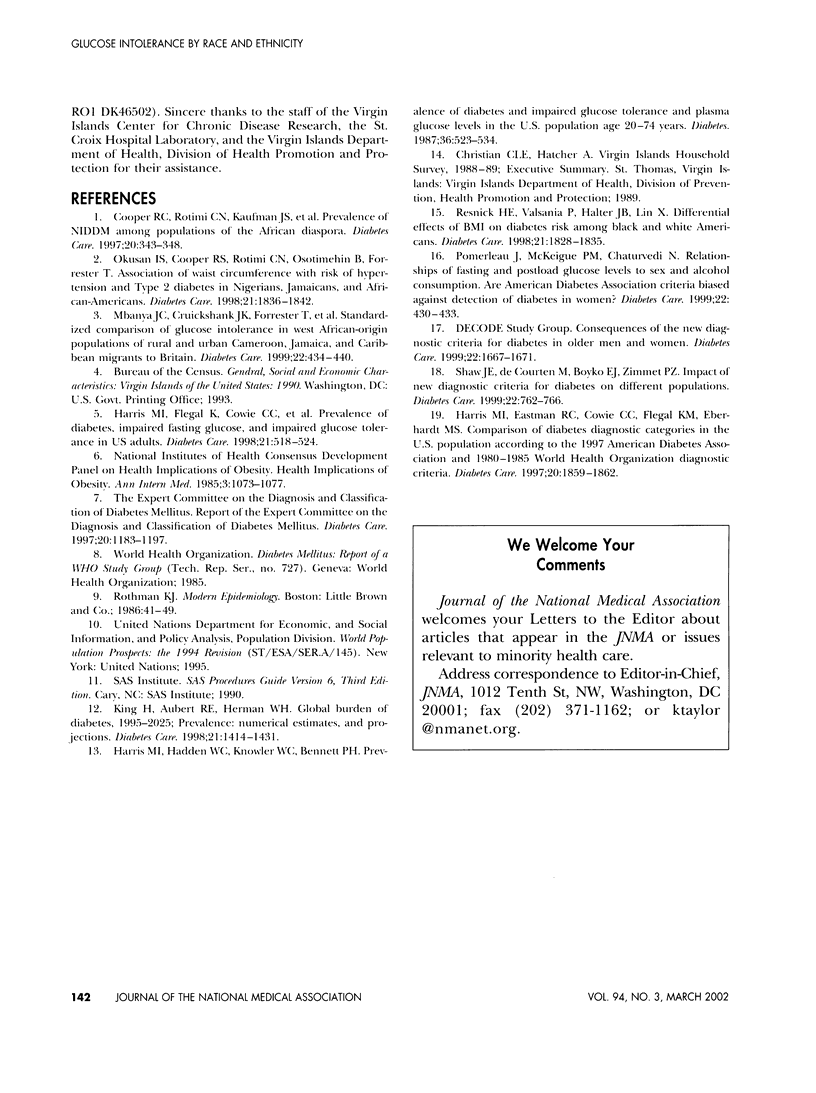
Selected References
These references are in PubMed. This may not be the complete list of references from this article.
- Harris M. I., Flegal K. M., Cowie C. C., Eberhardt M. S., Goldstein D. E., Little R. R., Wiedmeyer H. M., Byrd-Holt D. D. Prevalence of diabetes, impaired fasting glucose, and impaired glucose tolerance in U.S. adults. The Third National Health and Nutrition Examination Survey, 1988-1994. Diabetes Care. 1998 Apr;21(4):518–524. doi: 10.2337/diacare.21.4.518. [DOI] [PubMed] [Google Scholar]
- King H., Aubert R. E., Herman W. H. Global burden of diabetes, 1995-2025: prevalence, numerical estimates, and projections. Diabetes Care. 1998 Sep;21(9):1414–1431. doi: 10.2337/diacare.21.9.1414. [DOI] [PubMed] [Google Scholar]
- Okosun I. S., Cooper R. S., Rotimi C. N., Osotimehin B., Forrester T. Association of waist circumference with risk of hypertension and type 2 diabetes in Nigerians, Jamaicans, and African-Americans. Diabetes Care. 1998 Nov;21(11):1836–1842. doi: 10.2337/diacare.21.11.1836. [DOI] [PubMed] [Google Scholar]
- Resnick H. E., Valsania P., Halter J. B., Lin X. Differential effects of BMI on diabetes risk among black and white Americans. Diabetes Care. 1998 Nov;21(11):1828–1835. doi: 10.2337/diacare.21.11.1828. [DOI] [PubMed] [Google Scholar]
- Shaw J. E., de Courten M., Boyko E. J., Zimmet P. Z. Impact of new diagnostic criteria for diabetes on different populations. Diabetes Care. 1999 May;22(5):762–766. doi: 10.2337/diacare.22.5.762. [DOI] [PubMed] [Google Scholar]


